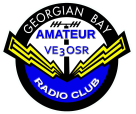2020-05-01, 15:55:29
(2020-05-01, 12:23:48)Rob_Walker Wrote: Thanks for the pictures. Nice job on the transformer too! I have watched all of Steve Ellington's presentations on EFHW antennas. He did a presentation where he covered earlier 'wire type' antennas that I found very informative as a new comer.Rob, re putting a choke on the coax. Maybe but DO NOT PUT A CHOKE AT THE ANTENNA END. The feed point impedance of a EFHW is very high so the "common mode" current is very low. The braid of the coax acts as a counterpoise and if there is a choke at the antenna end it cannot do its job. I use a common mode choke at the radio end. My choke is 18ft of RG58 coax wound around a plastic pipe about 2 inches in diameter. You may not need a choke at all. My coax is 100ft long and I suspect that is enough to dissipate the small common mode current from a EFHW antenna.
If I put my transformer up my tower, do you think I should put a choke on the line? I'm wondering if the coax would radiate or influence the resonance? Of course, this is where all the fun comes - experimenting. I like the way Ellington diagrammed his six configurations and took RF measurements at various parts of the coax and wire for comparison.
73 Rob
(2020-05-01, 09:58:45)VA3TS Tom Wrote: Hi, since you have a nice hole in the ground, this may be a good time to think about a ground rod. They say not to embed a ground directly in the concrete, but you can put the #6 in a conduit and bring that up through the pad... Greq VE3RQY can give you all the details about grounding... keep the top of the pad slightly above ground so no grass clippings etc will lay on it, round the corners if you can
https://gbarc.ca/grounding001.pdf
https://gbarc.ca/grounding002.pdf
73
Thanks for the tips Tom. Yes I have been thinking of grounding and my plan was to put three ground rods in the soil and attach them to the tower legs with #2 copper. I have a question:
Is is possible to connect my #2 ground wire to the ground rod below the surface of the lawn so I can cover the connection up? I didn't know if I could use an anti corrosion compound on the connection then hide it under the dirt. My concern was having objects sticking out of the grass. If it is OK to do this, then I would add additional ground rods 6' away from the tower and connect them as well, below the surface.
73
By the way, many people suggest making a common mode choke by coiling a few turns of coax about 6 inches in diameter (so-called "Scrabble wound"). This is very bad practice. An effective choke has high impedance and that requires high inductance. If the choke is wound neatly it will have predictable and stable impedance.



